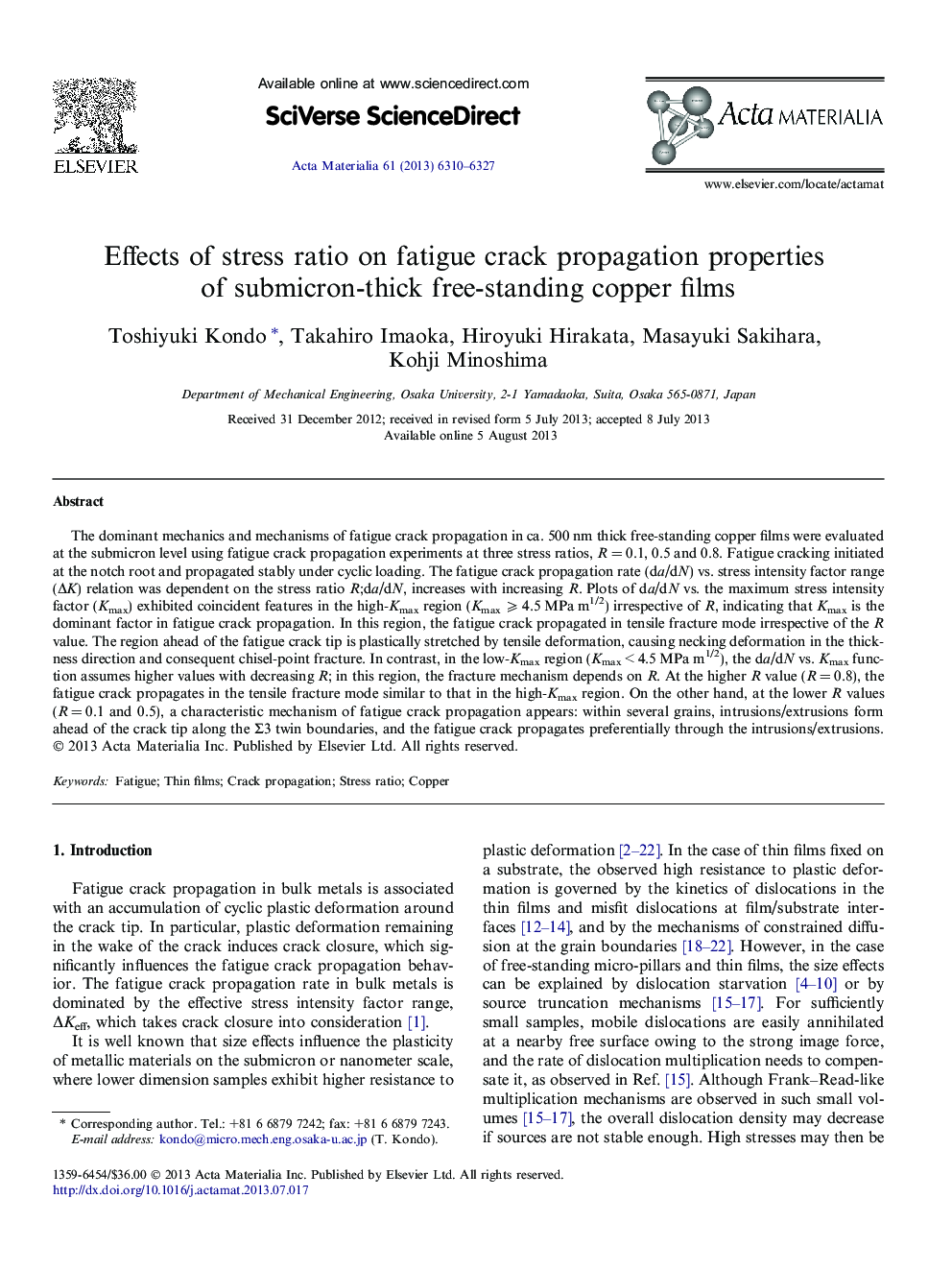| Article ID | Journal | Published Year | Pages | File Type |
|---|---|---|---|---|
| 1445884 | Acta Materialia | 2013 | 18 Pages |
The dominant mechanics and mechanisms of fatigue crack propagation in ca. 500 nm thick free-standing copper films were evaluated at the submicron level using fatigue crack propagation experiments at three stress ratios, R = 0.1, 0.5 and 0.8. Fatigue cracking initiated at the notch root and propagated stably under cyclic loading. The fatigue crack propagation rate (da/dN) vs. stress intensity factor range (ΔK) relation was dependent on the stress ratio R;da/dN, increases with increasing R. Plots of da/dN vs. the maximum stress intensity factor (Kmax) exhibited coincident features in the high-Kmax region (Kmax ⩾ 4.5 MPa m1/2) irrespective of R, indicating that Kmax is the dominant factor in fatigue crack propagation. In this region, the fatigue crack propagated in tensile fracture mode irrespective of the R value. The region ahead of the fatigue crack tip is plastically stretched by tensile deformation, causing necking deformation in the thickness direction and consequent chisel-point fracture. In contrast, in the low-Kmax region (Kmax < 4.5 MPa m1/2), the da/dN vs. Kmax function assumes higher values with decreasing R; in this region, the fracture mechanism depends on R. At the higher R value (R = 0.8), the fatigue crack propagates in the tensile fracture mode similar to that in the high-Kmax region. On the other hand, at the lower R values (R = 0.1 and 0.5), a characteristic mechanism of fatigue crack propagation appears: within several grains, intrusions/extrusions form ahead of the crack tip along the Σ3 twin boundaries, and the fatigue crack propagates preferentially through the intrusions/extrusions.
